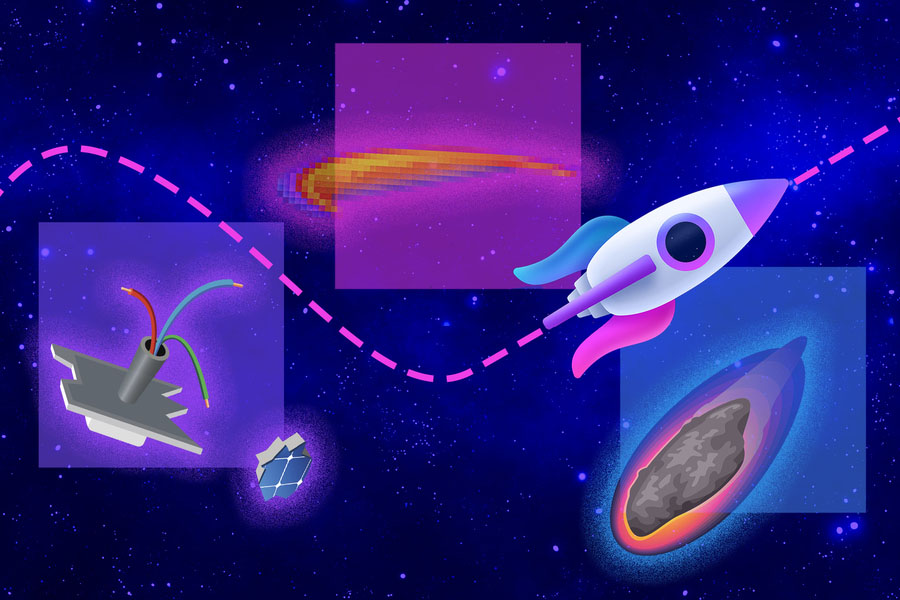|
Listen to this article  |

MIT researchers have developed a trajectory-planning system for autonomous robots in unpredictable environments. | Source: Jose-Luis Olivares, MIT based on figure courtesy of the researchers
Researchers at MIT have developed a technique that can guide an autonomous robot through unknown environmental conditions. The technique helps a robot avoid obstacles without knowing the size, shape or location of what it could encounter.
The research team hopes that its findings could help autonomous robots explore remote exoplanets where the robot, and the researchers who programmed it, don’t know what it will encounter on the planet.
“Future robotic space missions need risk-aware autonomy to explore remote and extreme worlds for which only highly uncertain prior knowledge exists. In order to achieve this, trajectory-planning algorithms need to reason about uncertainties and deal with complex uncertain models and safety constraints,” co-lead author on the paper, Ashkan Jasour, said.
MIT’s team couldn’t use typical trajectory planning methods that make assumptions about the vehicle, obstacles and environment. These methods are too simplistic for real-world settings. Instead, the team developed an algorithm that could determine the probability of observing different conditions or obstacles at different locations.
The algorithm determines the probability of these events based on a map or images the robot collects with its perception system. This approach formulates trajectory planning as a probabilistic optimization problem, a mathematical programming framework which lets the robot achieve planning objectives while avoiding obstacles.
“Our challenge was how to reduce the size of the optimization and consider more practical constraints to make it work. Going from good theory to good application took a lot of effort,” Jasour said.
The researchers then used higher-order statistics of probability distributions of the uncertainties to convert the probabilistic optimization problem into a more straightforward deterministic optimization problem. This kind of problem could be solved efficiently with off-the-shelf solves.
MIT’s team tested their technique with simulated navigation scenarios. In an underwater model where the algorithms needed to chart a course from an uncertain position, around obstacles and to a goal region. The system could safely reach the goal 99% of the time. Depending on how complex the environment is, the algorithm can plan a safe course in seconds or minutes.
The next step for the team is to create more efficient processes that significantly reduces runtime. Co-authors on the paper include Jasour, former Computer Science and Artificial Intelligence Laboratory (CSAIL) research scientist who now works at NASA’s Jet Propulsion Lab, and Weiqiao Ham, a graduate student in the department of electrical engineering and computer science and member of CSAIL. Senior author on the paper was Brian Williams, a professor of aeronautics and astronautics and a member of CSAIL.
Credit: Source link


Comments are closed.